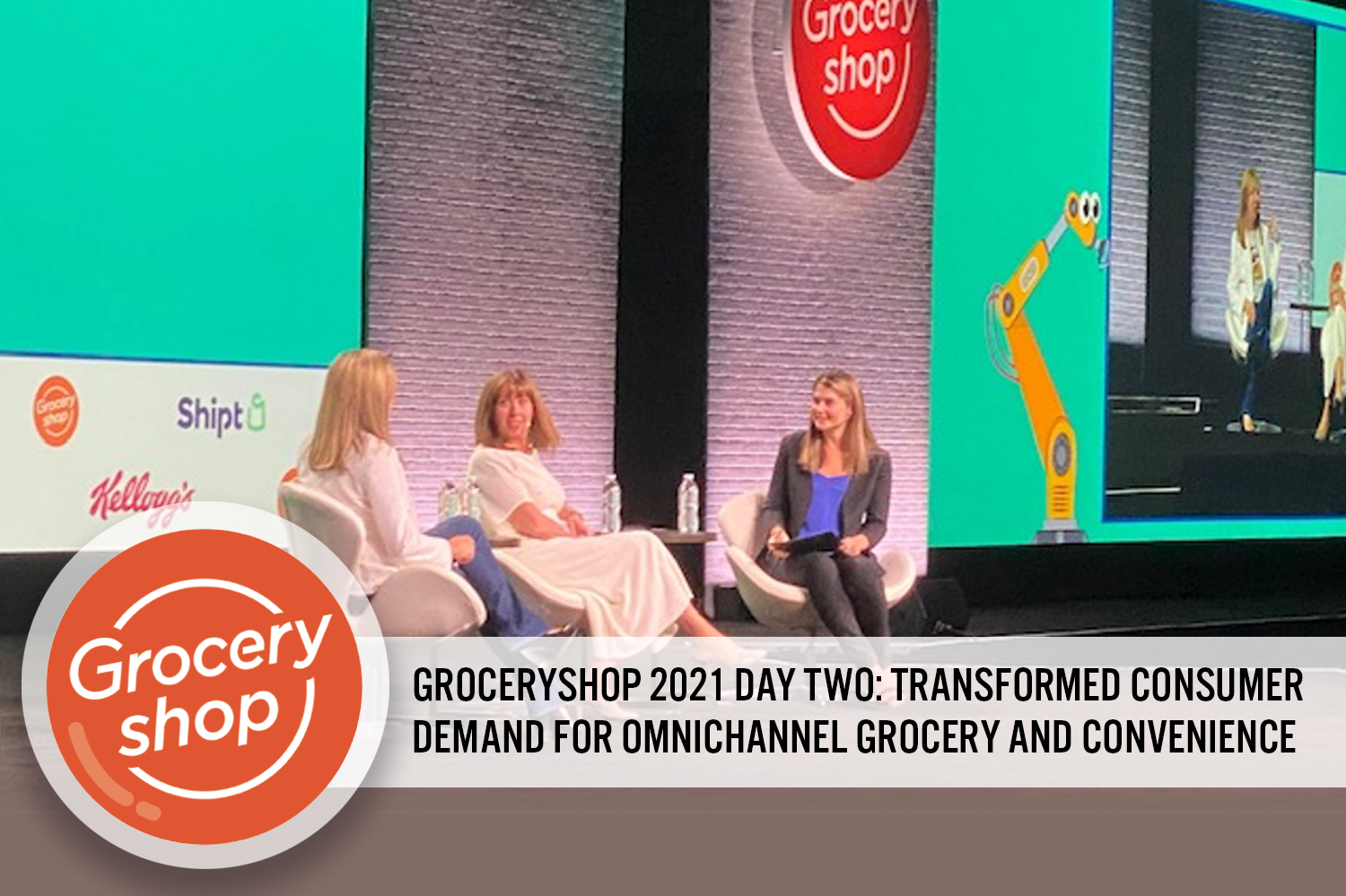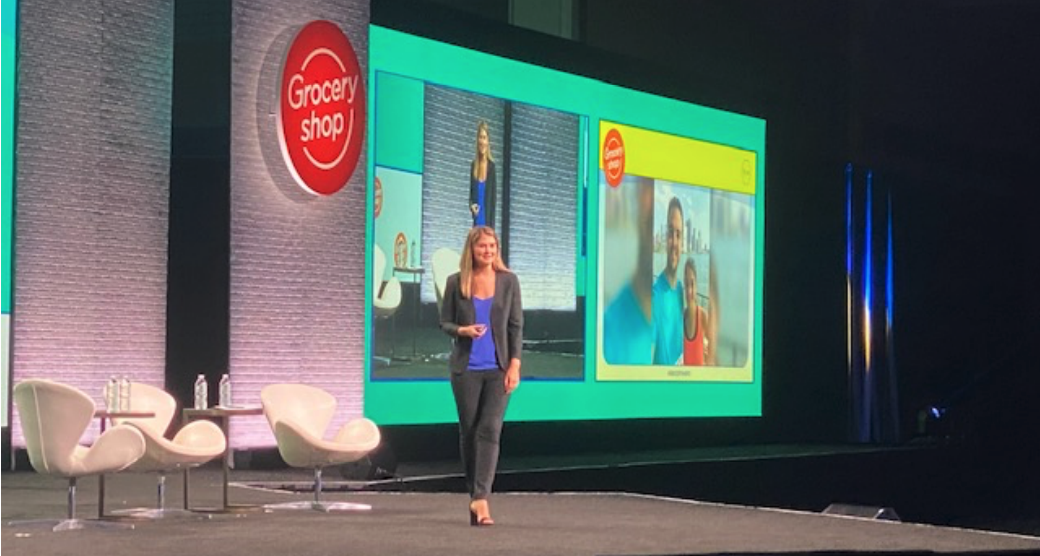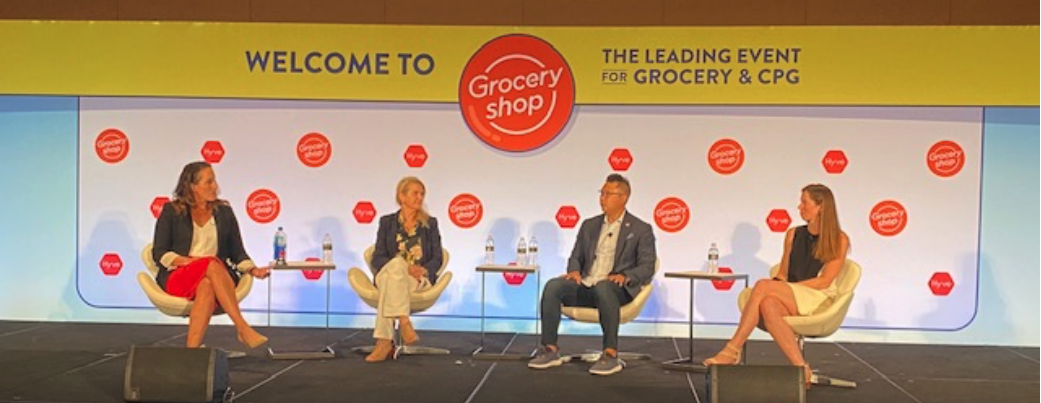
Nitheesh NH
What’s the Story?
The Coresight Research team is in Las Vegas this week, participating in the Groceryshop 2021 conference, which is being held from September 19 to 22 in Las Vegas, US. Featuring more than 150 CEOs and over 200 speakers, the event is focused on recent transformation in the retail environment, focusing on technology and innovation in consumer packaged goods (CPG), food and grocery. In this report, we present key insights from the second day of Groceryshop 2021, from across the event’s retail and technology sessions.Groceryshop 2021 Day Two: Key Insights
We identified three key themes during day two of the event:- The emergence of quick-delivery grocery startups
- The need to offer ever-greater convenience to the consumer
- The continuing evolution of store formats, boosted by the need to use retail space to offer compelling experiences to consumers
- Speakers: Mike Del Pozzo, SVP Sales and Chief Customer Officer at Frito-Lay North America; and Andre Persaud, EVP & Chief Retail Officer at Rite Aid
 Left to right: Tony Xu, Co-Founder and CEO of DoorDash; Jon Fortt, Co-Anchor at TechCheck, CNBC
Left to right: Tony Xu, Co-Founder and CEO of DoorDash; Jon Fortt, Co-Anchor at TechCheck, CNBCSource: Coresight Research[/caption] Keynote: The Grocery Zeitgeist—The Big Picture of Grocery Transformation
- Speaker: Krystina Gustafson, SVP Content, Groceryshop
- Society—Demographic forces include a Covid-19 baby bust, an aging US population, the decline of a white majority and an increase in mental health issues. The population migrating due to the pandemic did not go far, mostly moving to nearby suburbs, and those workers now have higher expectations from employers.
- Consumer—The focus shifted from health to wellbeing, and consumers now want additional functional benefits from products. Shoppers remain highly interested in shopping locally, and generational and other shifts are changing brands, which are introducing new categories across taboo products and men’s cosmetics, for example. The share of disposable income spent on food in the US is rising again, and consumers want a hybrid offering of pickup and delivery.
- Economy—With the US stock market seeing record highs, consumer sentiment has plunged recently. While consumers added nearly $4 trillion to savings, the upper quintile of the population represented two-thirds of savings, and the unemployment rate is higher for non-white groups, Gustafson said. There is a disconnect between corporate offerings and women’s needs: Women are over-mentored but under-sponsored.
- Technology—Livestreaming, which is enormously popular in Asia, is making inroads in the US. For example, the Old Spice Barbershop doubles as a content studio. Technology will be discussed in more detail during tomorrow’s keynote.
 Krystina Gustafson, SVP Content, Groceryshop
Krystina Gustafson, SVP Content, GroceryshopSource: Coresight Research[/caption] Making the Leap to Leadership
- Speakers (pictured on the cover of this report): Julie Bowerman, Chief Global Digital Customer and Consumer Experience Officer at Kellogg’s; Kelly Caruso, CEO at Shipt; and Krystina Gustafson, SVP Content, Groceryshop (Interviewer)
- Speakers: Lei Duran, SVP of Retail Insights, Kantar (Interviewer); Jola Burnett, VP at Behaviorally; Art Sebastian, VP of Digital Experiences at Casey’s; and Barbara Connors, VP of Commercial Insights at 84.51
- Will online grocery plateau or grow to the sky? Panelists saw several tailwinds to further growth: Grocers keep getting better at picking, accelerated by technology, and consumers increasingly expect it. Consumers have all the choices and do not have to settle.
- For online grocery, does pickup or delivery reign supreme? Pickup reigns supreme, as it is less expensive for retailers and consumers have control over when they pick up orders—and they can make additional purchases when they pick up orders.
- What is the role of social media? Look at Asia for trends: China is the powerhouse of livestreaming. Retailers need a strategy for Facebook, Twitter and Instagram, and now also Snapchat and Tik-Tok, all to engage consumers.
- Is 15-minute grocery delivery a fad? Convenience is no longer just a channel; it is a mainstay. Fast delivery is important, but perhaps 30-minute delivery will be sufficient to remain competitive and meet consumer demand.
 Left to right: Lei Duran, SVP, Retail Insights, Kantar (Interviewer); Jola Burnett, VP, Behaviorally; Art Sebastian, VP, Digital Experiences, Casey’s; Barbara Connors, VP, Commercial Insights, 84.51
Left to right: Lei Duran, SVP, Retail Insights, Kantar (Interviewer); Jola Burnett, VP, Behaviorally; Art Sebastian, VP, Digital Experiences, Casey’s; Barbara Connors, VP, Commercial Insights, 84.51Source: Coresight Research[/caption] Fulfillment, Pickup and Delivery Technology
- Speakers: Tony Atti, Co-Founder and CEO at Phononic; Orlee Tai, CEO at Star.ai; Scott Gravelle, Founder and CEO at Attabotics; Ben Jones, Founder and CEO at Ohi; and Bernadine Wu, CEO at FitForCommerce (Interviewer)
- Attabotics offers automated, robotic fulfillment solutions (consisting of a matrix of tracks and automated bins) for fulfillment centers, with the organizational concept based on the operation of ant colonies.
- Ohi’s platform aims to enable instant commerce directly through a brand’s own website through dynamic website integrations, a micro-fulfillment platform, managing post-purchase interactions. Instant commerce becomes an extension of the consumer experience, and consumers become more engaged if they receive products in less than one hour.
- Phononic offers a solid-state, intelligent frozen tote to meet the cold-chain challenge. This technology has analogs in LED-based lightbulbs and offers a significant sustainability advantage, since the chemicals used in refrigeration, cold storage and transportation will soon cause greater environmental damage than fossil fuels.
- Stor.ai offers a handheld fulfillment solution that provides accurate product location and optimized picking routes, zone-batch picking, artificial intelligence (AI)-based personalized replacements and real-time communication and live insights into fulfillment productivity and accuracy.
- Speakers: Arsen Avakian, Co-Founder and CEO of Cooler Screens; Richard Schwarts, President and CEO of Pensa Systems; Matt Eichorn, Co-Founder, President and CEO of Freeosk; and Laura Kennedy, Senior Lead Analyst at CB Insights (Interviewer)
- Cooler Screens transforms retail cooler surfaces into IoT (Internet of Things)-enabled screens, digitizing point-of-sale data. The company operates 10,000 screens in more than 30 markets.
- Pensa leverages robots, machine vision, smartphone and other cameras and AI to determine on-shelf availability, requiring no setup or planograms, having the platform learn as it goes. Applications include category management, demand forecasting, omnichannel retail, in-store operations and inventory accuracy.
- Shopic aims to digitize retail’s front end, offering a data-collection device that clips onto the shopping cart to increase convenience for the consumer in the checkout process.
- Freeosk has deployed several kiosks inside grocery stores that provide free samples and collect consumer data (on an opt-in basis) in the process.
- Speakers: Peter Strong, Partner at The Partnering Group; Deepak Jose, Head of Global Demand Analytics at Mars; Rocquan Lucas, Content Director, Groceryshop (Emcee); and Justin Honaman, Head of Worldwide CPG at Amazon Web Services, Amazon
- Strong discussed how retailers typically approach the deployment of new technologies in a reactionary manner, but leaders should envision who they are and where they want to go, visualizing the desired outcome and determining gaps in strategy.
- Jose urged the audience to use IT to find value, inverting the typical pyramid with value on the bottom, bringing it to the top. He encouraged companies to develop “white box” solutions, which center on owned intellectual property.
- Honaman provided an overview of AWS and explained that topics he is currently discussing with customers include AI/ML, supply chain and sustainability. He also discussed e-commerce packaging, with a focus on sustainability—presenting a video from Procter & Gamble that shows new online packaging for Tide detergent, which ships in its own container (rather than within another box) and uses less water and packaging than typical detergent found in a supermarket.